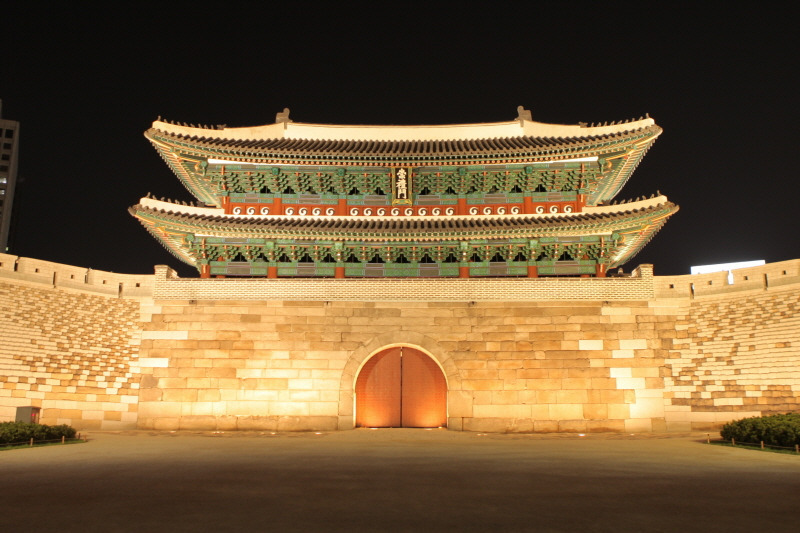🏯 Stories of Korea’s National Treasures 1

Photo Source: Sungnyemun, National Heritage Administration
Sungnyemun
(숭례문 · 崇禮門 · Namdaemun)
📖 1. History & Description
Sungnyemun, also widely known as Namdaemun (“Great South Gate”), was the first designated National Treasure of Korea.
It was originally constructed in 1398, during the early Joseon Dynasty, under the reign of King Taejo.
As the main southern gate of Hanyang (present-day Seoul), it served both as a defensive structure and a ceremonial portal. Its name, "崇禮門 (Sungnyemun)", means Gate of Exalted Propriety, symbolizing the Confucian value of 礼 (li, courtesy and propriety).
The structure is a two-story wooden pavilion built upon a sturdy stone base, displaying the distinct elegance of Joseon architecture. For centuries, it stood as a guardian of the capital and one of the most iconic landmarks of Seoul.
🪄 2. Significance
- Cultural Symbol: It represents the dignity of the Joseon Dynasty and its Confucian ideals.
- Architectural Value: A rare surviving example of Joseon-era city gates, blending stone fortifications with an ornate wooden pavilion.
- Resilience & Restoration: Despite being damaged during wars and a major fire in 2008, Sungnyemun has been faithfully restored and remains a profoundly cherished cultural treasure for the Korean people.
🌸 3. A Warm Thought
Sungnyemun is not just an ancient gate—it is a silent witness of Seoul’s long history, a symbol of resilience, and a reminder that cultural heritage, even when scarred, can rise again with care and devotion.
📌 Notice
The National Treasure number only indicates the order of designation, not a ranking of value.
For more information, please visit the 👉 National Heritage Portal.